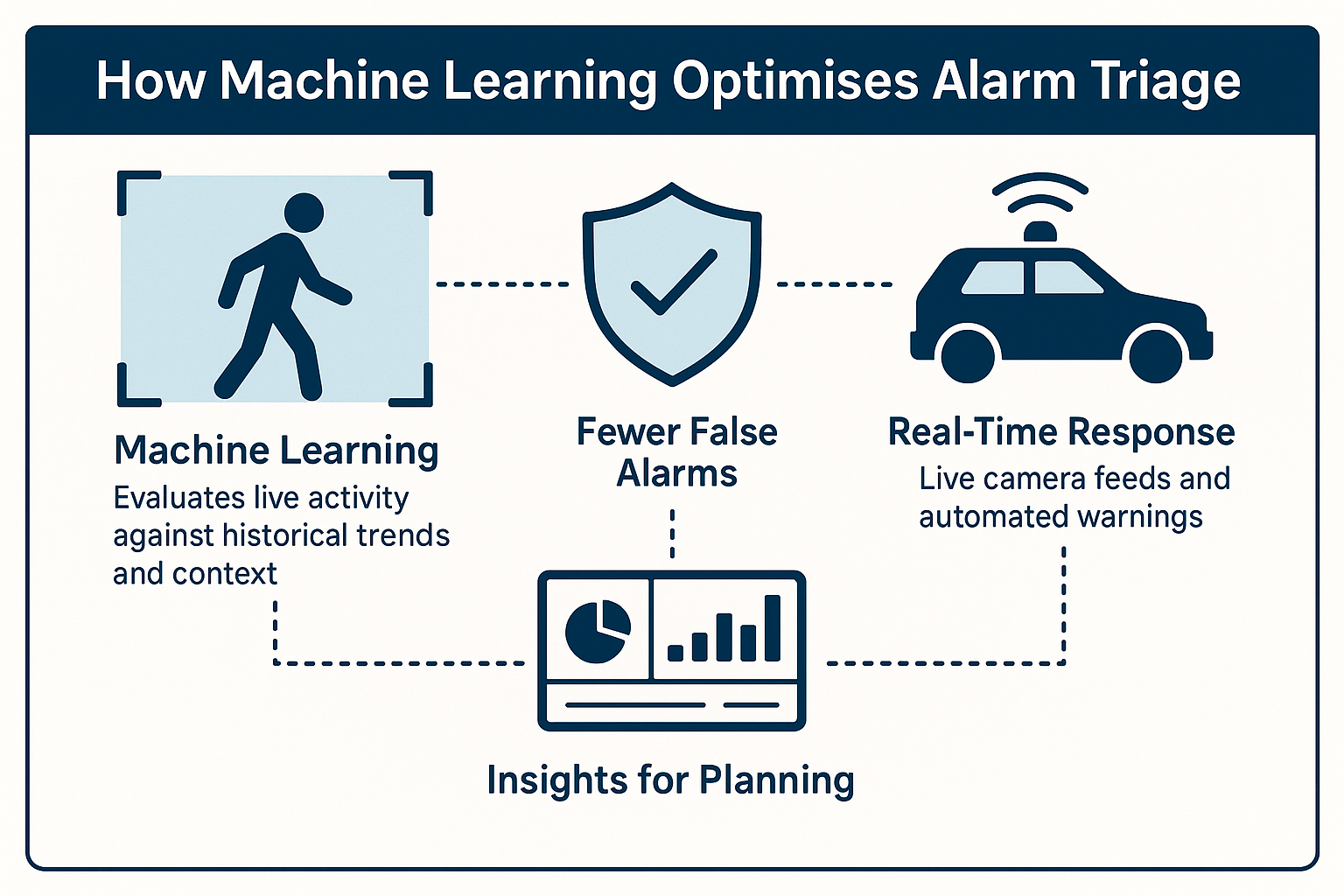Conventional alarm systems are fast becoming outdated in Australia’s high-risk environments, particularly across commercial, retail, and industrial sectors. With assets on the line and operations running 24/7, static alerts and delayed operator responses no longer meet the demands of modern security. Today’s clients expect more than just motion detection or basic alerts like AI-driven alarm response they expect systems that can interpret behaviour, assess urgency, and act in real time. Alarm fatigue, caused by repeated false triggers, is a widespread issue across many control rooms. Advanced solutions now aim to reduce that burden through intelligent threat analysis and smarter prioritisation.
How Machine Learning Optimises Alarm Triage
Machine learning is playing a central role in transforming AI-driven alarm response. These systems go beyond simple triggers, evaluating live activity against historical trends and environmental context. A detected movement at a logistics site at 3am, for example, is no longer treated in isolation. The system will assess recent site activity, staff rosters, access logs, and lighting levels before escalating the incident. Much of this processing is done via edge computing or secure cloud-based platforms, meaning decisions are made in seconds with minimal human input. The outcome? Fewer false alarms, better use of patrol resources, and greater overall reliability.
Real-Time Response Through System Integration
Once a genuine threat is detected, today’s integrated systems waste no time. Live camera feeds are pushed straight to mobile patrol units, automated voice-down warnings can be activated on site, and support staff are looped in through synced dashboards. It’s no longer about waiting for someone in the control room to assess what’s happening automated workflows drive immediate, coordinated responses across the board. This level of integration not only improves response times but also strengthens accountability, as every step is logged, time-stamped, and available for audit under Australian compliance frameworks.
Operational Challenges and the Push for Interoperability
One of the challenges in the Australian market is that many sites still operate using fragmented, legacy systems. These older setups struggle to support newer AI functions, leading to gaps in monitoring or delays in response. Fortunately, there’s a growing shift towards cloud-native and vendor-neutral platforms that are easier to integrate. Training is another barrier, particularly when transitioning teams from manual processes to automated ones. But the data speaks for itself organisations adopting AI-assisted monitoring consistently report faster resolution times and fewer missed events.
A Real Case of Predictive Security in Action
A distribution centre in Sydney’s western suburbs provides a clear example of how AI-enhanced systems can work in real life. After several overnight break-ins, the site upgraded to an intelligent alarm solution that monitored thermal movement and behavioural patterns. Within a fortnight, the system flagged unusual activity near a fence line before the alarm was even triggered and dispatched a patrol unit. The trespassers were intercepted without any loss or damage. This case illustrates how predictive monitoring can step in before an incident escalates, rather than just reacting afterwards.
Insights That Drive Smarter Planning
Advanced alarm platforms aren’t just about faster response they also offer valuable insights for long-term planning. Site managers can view real-time dashboards showing hotspot activity, typical response times, and peak risk periods. These data sets help drive informed decisions around staffing, patrol scheduling, and even site layout. With the ability to track and analyse these metrics over time, Australian security teams are becoming more proactive rather than reactive, saving costs and improving reliability in the process.
Conclusion: The New Standard for Alarm Monitoring
AI-driven alarm response has already redefined the benchmark for what modern security should look like. It’s faster, smarter, and far more accurate than the legacy systems still in place at many sites. In an Australian context where operational risks are diverse and regulations are strict, embracing this shift is essential. Whether protecting commercial buildings, warehouses, or critical infrastructure, these intelligent systems provide a clearer path to real-time protection and smarter site management. For security professionals looking to stay ahead, now’s the time to lead with innovation not catch up later.


